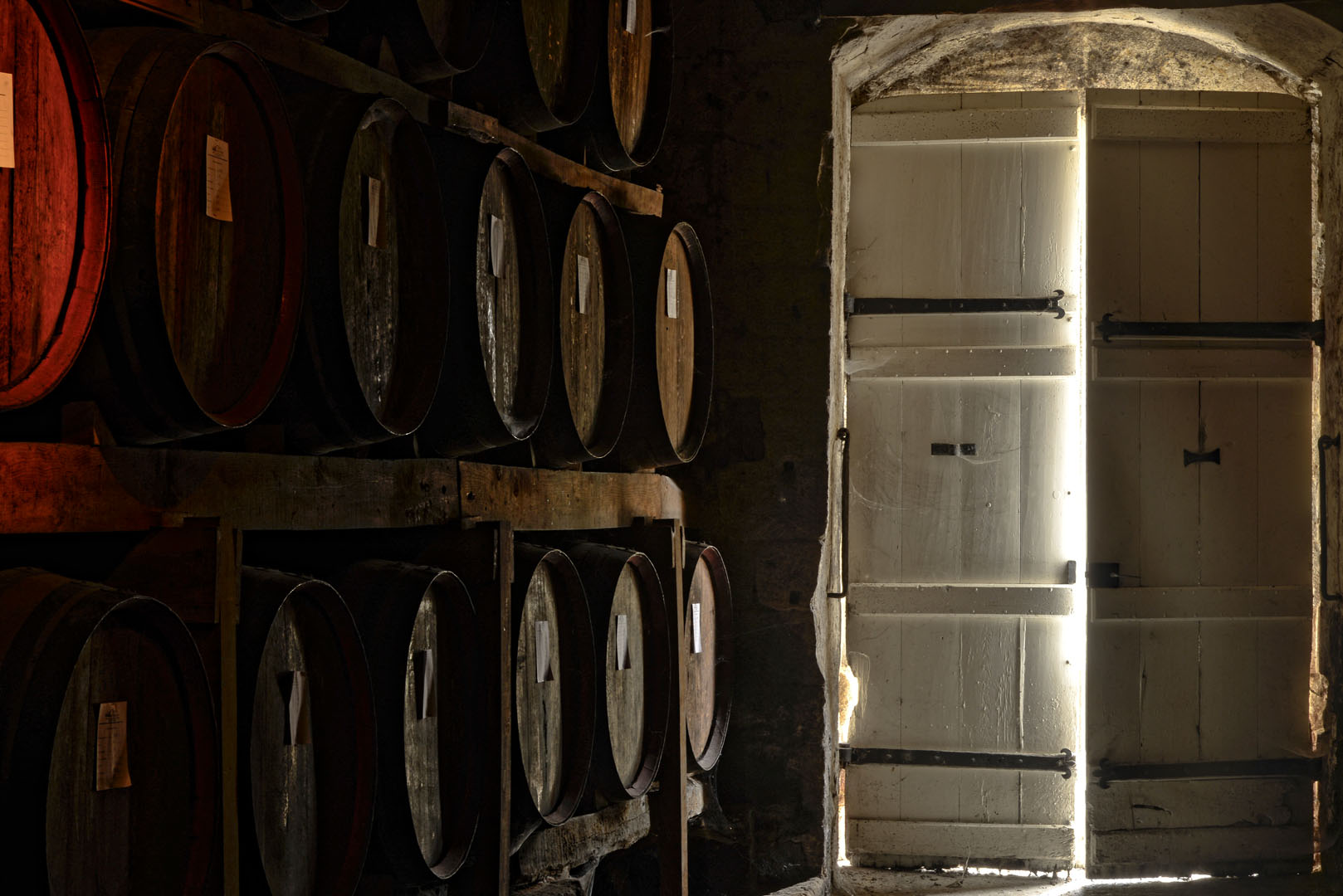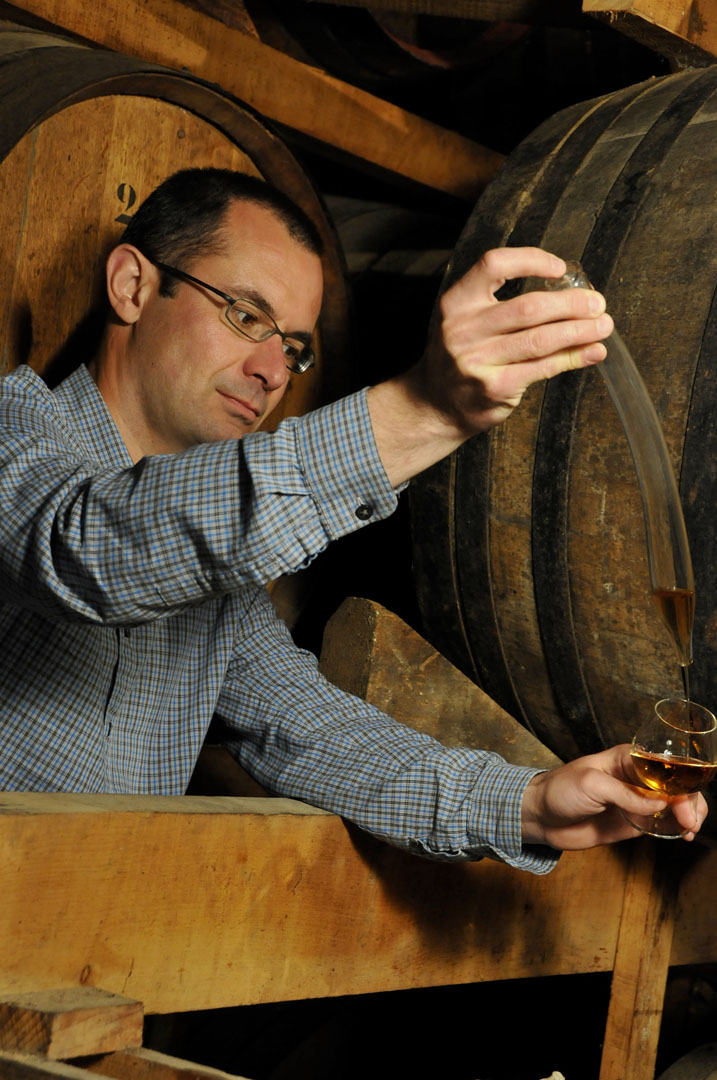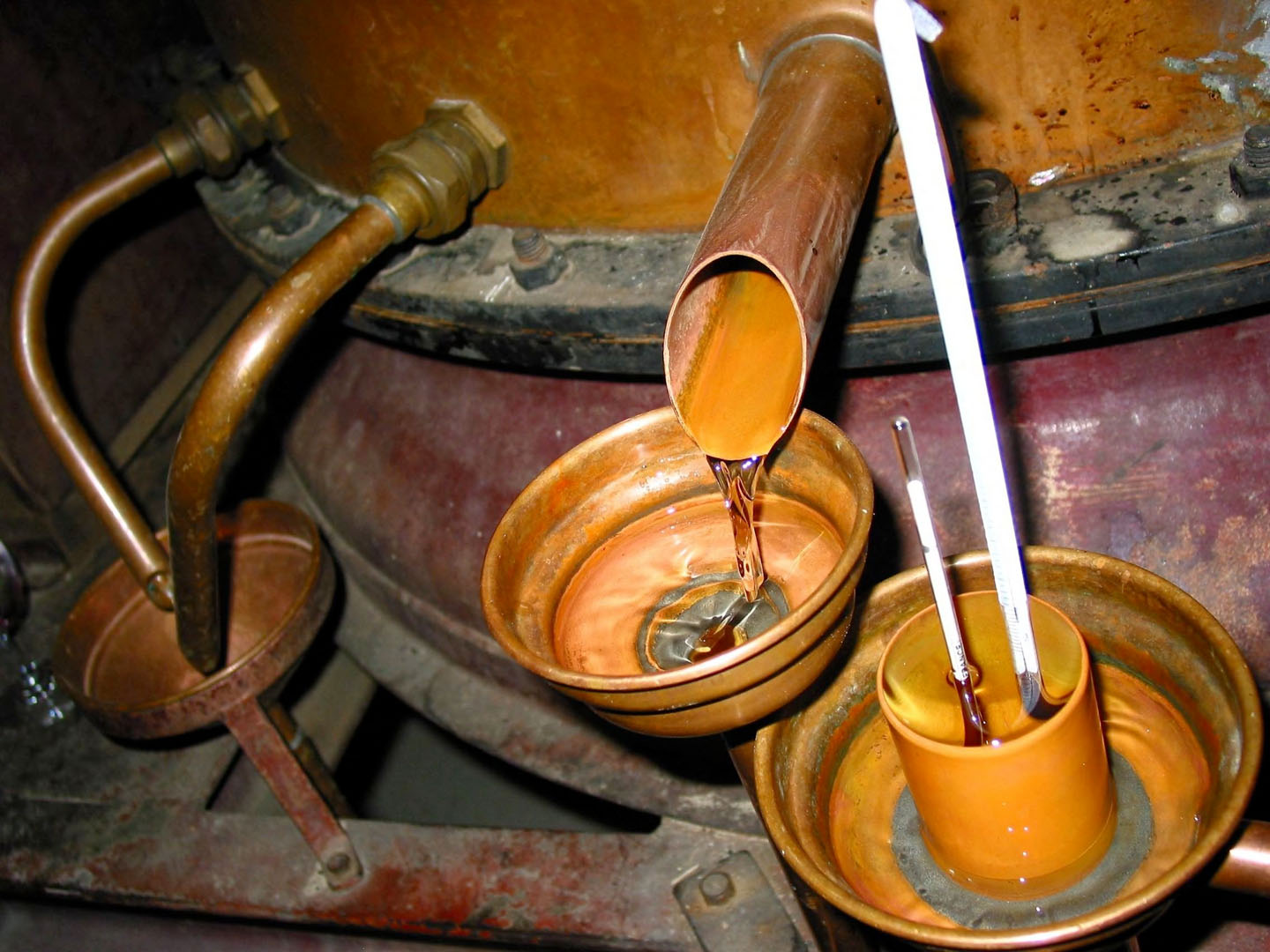Nowadays, 20% of the Cassaigne vineyard is devoted to making Armagnac.
With a pot still very specific to this wine spirit: the Armagnac continuous still. It is a pure copper apparatus, which was recognised by a patent registered in 1818 (by a stove builder from Auch, Sieur Tuillière, during the reign of Louis XVIII), then adapted, modified and improved by local distillers. It really contributes to the unique character of Armagnac.
- When it leaves the pot still, the wine spirit is colourless. At this stage, the Armagnac already displays incredibly rich fruit aromas (plums and grapes), often accompanied by floral notes (vine flowers and lime blossom).
The extraction of tannins and aromatic compounds from the barrel.
The partial evaporation of the wine spirit and the reduction in the alcohol content.
The development of oak and wine aromas due to slow oxidation of the Armagnac as it comes into contact with the oxygen in the air through the barrel.

Have you heard of the “angels’ share”?
This a poetic way to describe the reduction in the alcohol content of Armagnac during barrel ageing, approximately half a degree every year. After a certain number of years (ranging from around 50 years or more), as determined by the cellarmaster, the wine spirit is transferred into glass demijohns. The quality is then at its peak.




